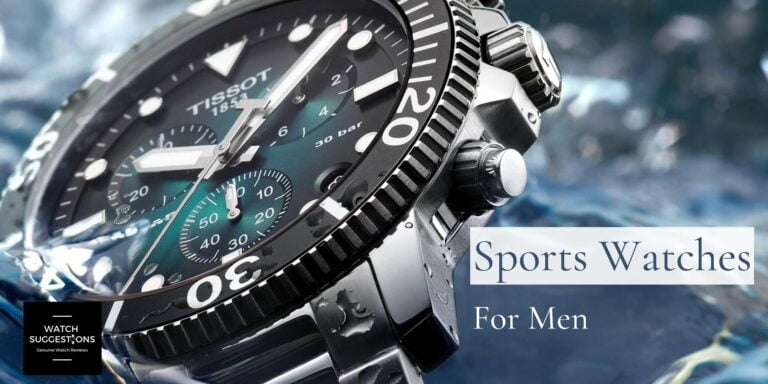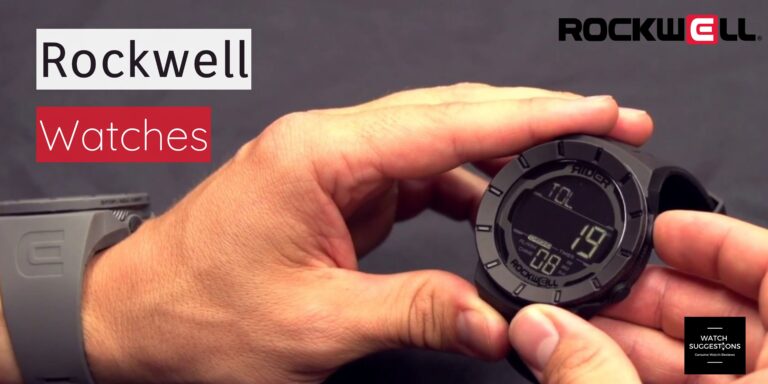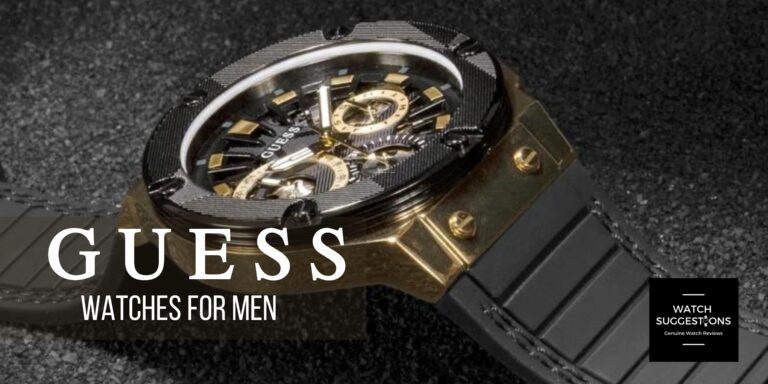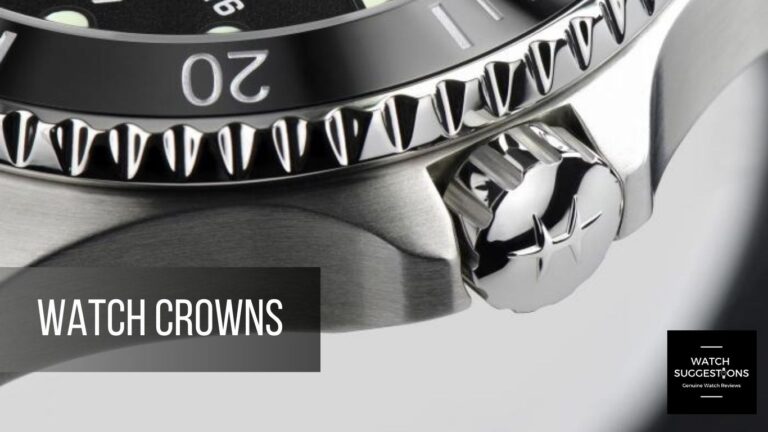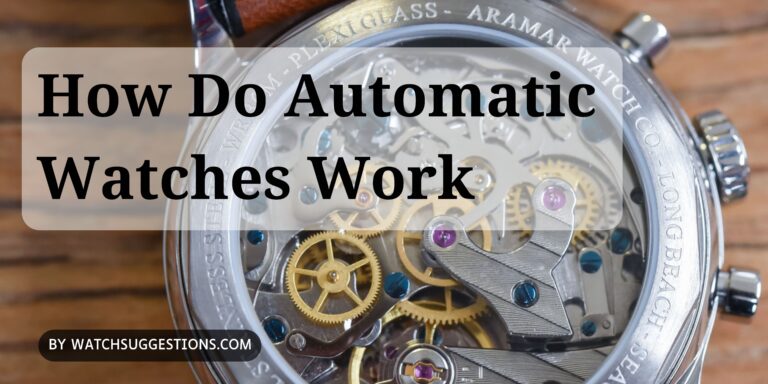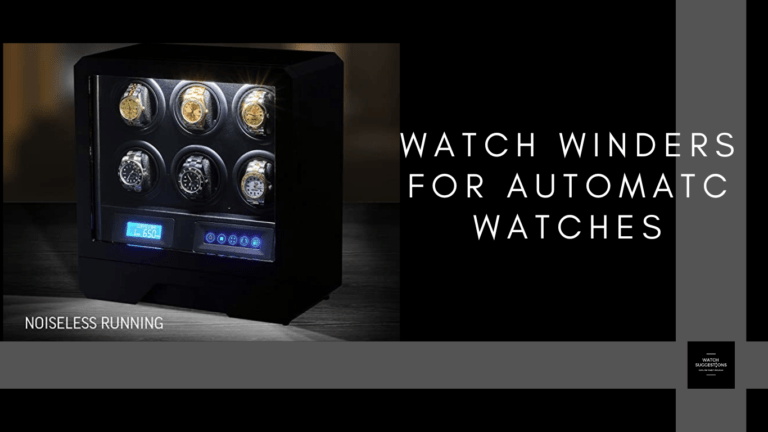Crown and Caliber: The Secret Heartbeat of Every Luxury Watch (2025 Guide)

Watches have been an essential accessory for centuries. Not only for keeping time but also as a status symbol. When shopping for a watch, two of the most critical factors to consider are the crown and caliber.
The crown is the small knob on the side of the watch used to set the time and wind the watch. While the calibre refers to the movement or mechanism that powers the watch.
Understanding the crown and caliber of a watch is important. It can help you choose the right timepiece for your needs. whether you’re looking for a classic mechanical watch or a modern quartz one.
So let’s dive into the world of crown and caliber and learn what makes them so important.
Crown
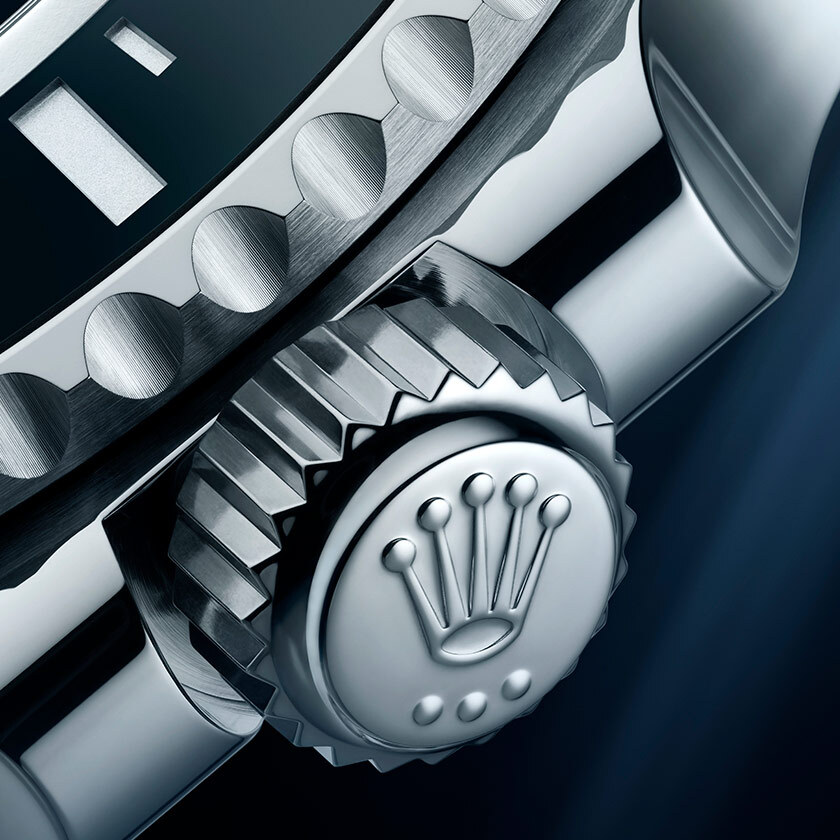
The watch crown is an essential and integral component of wristwatches. It can be a small ribbed knob or a rounded cut diamond, usually at 3 o’clock.
A watch crown remains an essential, intricate, and underappreciated component of watches. Despite the transition from manual to digital winding.
Even in some kinds of smartwatches, a crown is still used to update or change the watch’s features.
What is the Crown of a Watch?
In a nutshell, a watch’s crown is the most obvious component. A part that everyone would at first notice.
Used to change the time on the main dial, but the crown can do more or less anything, depending on the watch’s features.
A crown plays a big part in a mechanical watch because it’s used to make the watch work in general. The crown powers the watch’s internal movement and lets the wearer wind a mainspring.
The crown is as usual found at three o’clock in most cases. But a variety of watch brands use different positions. All this depends on the function they serve.
The only part that can be touched is a component of the watch’s internal movement. Its position on the watch case makes it somewhat exposed.
It can sometimes make wearing a watch uncomfortable. As a result, a watchmaker comes up with a way to make a left-hand model with the crown at 9 or even 4 o’clock.
Even though this small component sticks out from the watch case’s side. It could wear down or break from repeated impacts, it appears to be durable.
As a result, routine maintenance is still required. Despite the development of crown guards to safeguard the crown.
Why is the Crown of the Watch Important?
The watch’s “crown” and head position are both referred to by their name. This shows how important its function is. Having said that, someone asked me the bizarre question, “Can a watch work without a crown?”
The most likely response is that it depends on the state. Particularly about the kind of watch movement.
It might only be used to set the time on a quartz movement with the simplest features. But as long as it works properly, everything would be fine.
The quartz movement itself does not need the crown for operation. But the crown is the most crucial component for manual-winding watches.
It must be manually wound regularly for them to function properly. The movement will stop functioning without a crown due to the lack of energy stored in the mainspring.
To adjust the time and perform a hacking function. Watchmakers continue to develop new inventions and add complications to watches. You can see this in the evolution of their design and placement.
A crown on a mechanical watch lets the wearer wind the mainspring of the watch. This helps to power the internal movement.
In watches with more complex functions. Such as world-timer, GMT, and moon phase watches. A crown is used to configure the watch complication.
Types of Crowns
The watch crown can be found in a variety of styles as well. The three main types are as follows:
Regular (push-pull),
Recessed crown, and
Screw-down crown.
A Screw-Down Crown
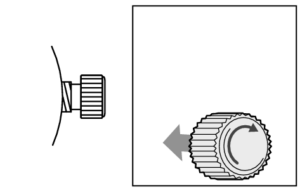
A screw-down crown works in the same way that a bolt and a nut do: it screws down into the case. Because it prevents water from entering the watch’s internal components.
Screw-down crowns are typically found on dive watches, as well as other types of watches. In watches where water resistance is an important feature. The case is also protected from dust by a screw-down crown.
Recessed Crown
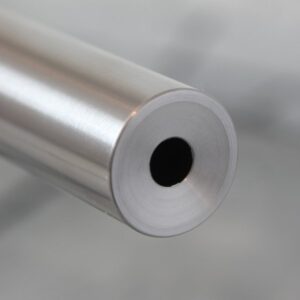
A crown that recedes into the movement is known as a recessed crown. This results in a seamless and “hidden” look that keeps the crown out of the way. It does not harm the watch’s entire design.
Crown guards also have a few practical advantages. First, the case serves as a kind of crown guard when the crown is recessed into the case.
As a result, the crown remains secure without the bulky and awkward crown guards. The crown protrudes from the case. Since the watch sits close to the case and does not protrude. It also contributes to the watch’s improved comfort.
Push-Pull Regular Crown
As the name suggests, a regular crown is exactly what it is. It is neither a recessed nor a screw-down crown. This is the most typical kind of crown.
It only has the function of operating the functions and has nothing special about it. To engage it, you pull on it and then push it back into place when you’re done.
The various functions of a watch crown
As before stated, a crown may perform various functions. While some may only serve one purpose (setting the time). Others may serve many purposes.
The most obvious and fundamental purpose of a crown is to set the time. To set the correct time on the watch, you remove the crown by pulling it out. This feature is present in every analogue watch with a crown.
Winding the Watch
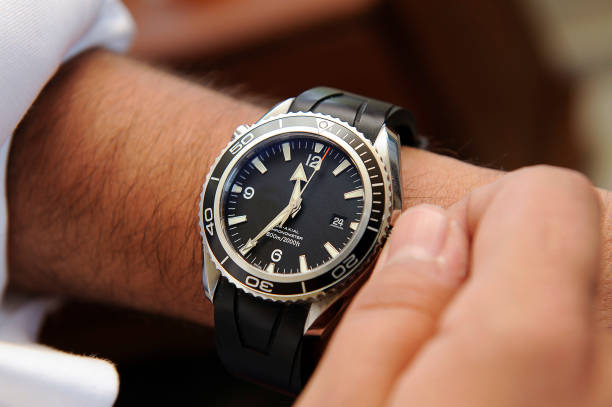
Another normal capability that the crown has is to wind the development. When it comes to manual movements, which are only powered by manual winding, this is, of course, obvious.
But, many automatic movements can also have a built-in manual winding function. The watch’s mainspring is wound when the crown is turned.
Allowing it to store energy and keep the watch running. The majority of the time, you wind your watch in a clockwise direction when it is in its first position.
So, a common query is whether a watch can be overwound during winding. Yes, but it depends on the watch, so that is the answer to that question.
Today, many mechanical watchmakers include safeguards against overwinding in their designs.
Yet, manual watches can be wound but do not have this feature. The automatic watches have a feature that prevents the watch from being overwound.
Set the Time and Date
If the watch has a day or date function, most of the time use the crown to set these settings. You can adjust the watch’s time and date so that they appear by putting the crown in the right place.
Last but not least, Watch’s hacking capability
A watch’s hacking capability comes into play. What is it? The movement will hack and stop when pulling the crown out to its final position.
This feature is not present in all watches. The cheapest mechanical watches generally lack it.
But, it is still a very useful feature that lets you set the correct time. Right down to the second when you push the crown again to start the movement.
Designs of Watch Crowns
You may also have noticed that different watches have different designs for their crowns. Some crowns are large, others are small, and some have unique shapes.
Most of the time, crown designs use to match the watch’s design or reflect the watch’s purpose.
To put it another way, some crowns might be more useful than others. For instance, pilot’s watches are well known for using huge, large crowns.
This is because pilots should be able to set the time on the watch with gloves on with ease. But, dress watches don’t use large, awkward crowns because they don’t fit the purpose or design of the watch.
Due to this, the crown of a watch is an important component of its design and function. It is typically designed with great care.
You can learn more in our detailed guide on the watch crown and its functions.
Caliber
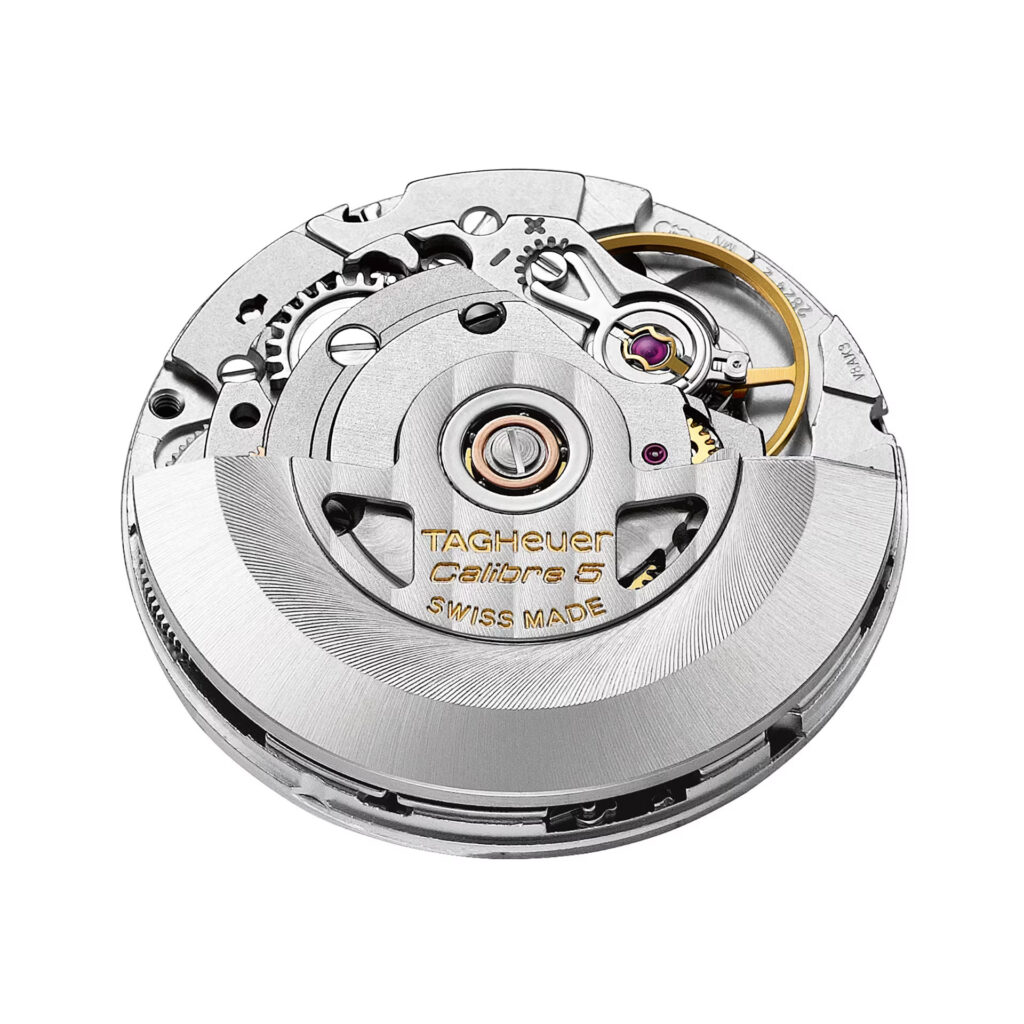
The manufacturer’s movements are referred to by their crown and caliber. The particular development or interior system of the watch.
It is assigned an interesting model. This turns into the recognizable proof number of the time teller.
In-house movements developed by certain manufacturers. They are typically numbered using their proprietary identification system.
According to the intricate movements that are a part of the watch’s mechanism. Brands like Omega and TAG Heuer have numbered their calibre.
Calibre 3, 5, 6, and 7 are all automatic movements. Each has a little different extra function or feature. Such as a second-time zone/GMT hand or a sub-seconds dial at 6 o’clock (Cal 6) on the dial.
Calibre 16 is a chronograph module-equipped ETA 2892 auto. The crown and pushers are on the side of the case. They are the quickest way to determine whether this movement is being used in any watch.
It is a Valjoux 7750 chrono movement if they are all in line when viewed in front of it. But, the module-equipped ETA 2892 is identified if the winding crown. It is a little lower than the chrono pushers on either side.
The Valjoux 7750 chronograph movement is Caliber 17. The resonance rate of Caliber 36 is 36,000 vibrations per hour. The Caliber 360 has a staggering resonance rate of 360,000 vibrations per hour.
Why is the Caliber and Crown of a Watch Important
There are several reasons why the caliber of a watch is so important. For one, it determines the watch’s accuracy.
A high-quality caliber will keep time more accurate than a lower-quality one. This means your watch will be more reliable in keeping you on schedule.
A watch with a poor caliber can lose or gain time very quickly, which can be frustrating and inconvenient.
Another reason the caliber of a watch is important is that it affects the watch’s longevity. A high-quality calibre is built to last. With precision components that are designed to withstand wear and tear over time.
A low-quality caliber may wear out quickly. It needs to be replaced more often, leading to extra costs and hassle.
Furthermore, the caliber of a watch can affect its entire value. A watch with a high-quality caliber is often more expensive than one with a lower-quality caliber.
As it requires more skilled labour and advanced technology to manufacture. But, a well-made watch with a high-quality calibre. It can also hold its value over time, making it a worthwhile investment.
Overview To Watch Caliber
A watch’s caliber can also influence its features and functions. For example, some watches have complications. Such as a chronograph or a moon phase display.
It needs extra mechanisms and components to operate. A high-quality caliber can provide precision and reliability. These are needed to support these additional features.
In conclusion, the caliber of a watch is an essential factor. You should consider it when choosing a timepiece. It affects the accuracy, longevity, value, and features of a watch.
Investing in a high-quality caliber can ensure that your watch performs well. It will be reliable and accurate for years to come.
So, next time you’re in the market for a new watch, make sure to pay attention to its calibre and choose wisely.
Functions of the Caliber of Watch
1. Timekeeping
The primary function of a caliber in a watch is timekeeping. The caliber handles the precise and accurate movement of the watch’s hands.
A calibre consists of many parts. Including the balance wheel, the escapement, the mainspring, and the gear train.
These parts work together to keep accurate time by regulating the movement of the hands.
2. Power Reserve
The power reserve is another crucial function of a caliber in watch. The mainspring in the caliber provides the energy required to keep the watch running.
The power reserve is the amount of time that the watch can run without being wound.
A high-quality caliber can have a power reserve of up to several days. While a lower-quality one may only have a power reserve of a few hours.
3. Accuracy
The accuracy of a watch is directly related to the quality of the caliber. A high-quality caliber will keep the watch accurate to within a few seconds per day. While a lower-quality one may be off by several minutes per day.
The accuracy of the watch is affected by many factors. Including the temperature, the position of the watch, and the level of winding.
4. Complications
A complication is any function of a watch beyond the standard timekeeping. A caliber can include various complications. Such as a date display, a chronograph, or a moon phase indicator.
These extra features need extra parts and mechanisms within the caliber. This increases its complexity and functionality.
5. Durability
The durability of a watch is also influenced by the quality of the caliber. A high-quality caliber will be made with precision and high-grade materials. Making it more resistant to wear and tear.
A lower-quality caliber may be more susceptible to damage. It needs frequent repairs or replacements.
Conclusion To Crown And Caliber
The crown and caliber are two of the most important components of a watch. They play a crucial role in its functionality and accuracy.
The crown acts as a key to the wind and sets the watch. While the caliber is the mechanism that drives the movement of the watch.
The precision and craftsmanship that goes into creating these tiny components. This is what makes watches truly remarkable pieces of technology and art.
Whether you’re a collector or an enthusiast. Otherwise, you just appreciate the beauty of a finely crafted timepiece. Understanding the importance of the crown and caliber is very helpful.
It will deepen your appreciation for the timeless elegance and engineering marvel that is the wristwatch.

